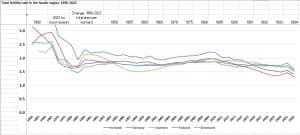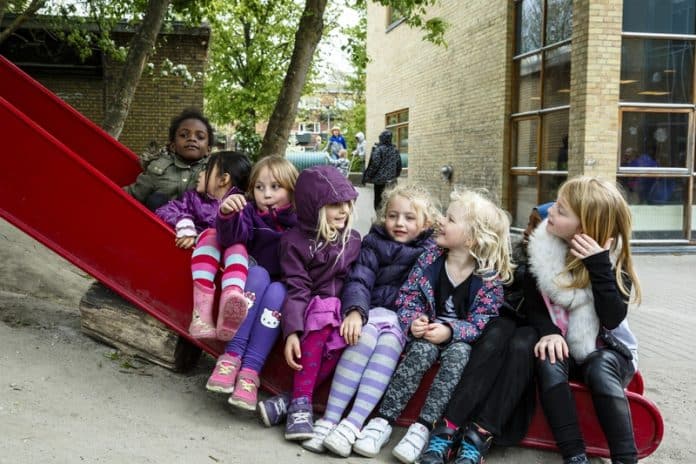In recent years, fertility rates have fallen sharply in the Nordic countries. In these social welfare states these figures remain an unexpected mystery, subject for eager research. May 15 is the International Day of the Families.
Showing a small increase during the years of the pandemic, the figures are alarming: the fertility rate in Finland is the lowest of the Nordics, at 1,3, and the fertility rate in Iceland is the highest, at 1,6. However, the same trend is clearly visible in the rest of Europe too.

The total fertility rate is comparable across countries since it takes into account changes in the size and structure of the population. In recent decades, Europeans have generally been having fewer children, and this pattern partly explains the slowdown in the EU’s population growth. In 2021, the total fertility rate in the EU was 1.53 live births per woman.
“When the total fertility rate goes below 1.3 live births per woman, it is often referred to as ‘lowest-low fertility'”, says Timothy Heleniak, Senior Research Fellow at Nordregio and geographer.
Increase during pandemic

According to the report State of the Nordic Region, published every second year, last year’s edition focuses on the time of the pandemic. The report is produced and published by Nordregio in close cooperation with the Nordic Council of Ministers. It contains a unique collection of data on the economy, demographics, migration, digitalisation, employment and more.
During the pandemic, the Nordic Region not only experienced an increase in the number of births. During the first waves of the pandemic, most Nordic countries and autonomous regions also experienced somewhat elevated mortality levels. In all Nordic countries except Greenland, more children were born in 2021 than in 2020, although the increase in Sweden was marginal. In Norway, Iceland and Finland, among others, the rise was a welcome break in the trend after a decade of reduced fertility.

When trying to find an answer on why fertility rates are going down, researchers are as interested as us:
“The Nordic countries are in general level good welfare states”, says Nora Sanchez Gassen, political scientist, demographer at Nordregio. “They have good social support, they are stable countries with high levels of social trust. In general, these should be considered good conditions to raise children, but nonetheless we see that fertility is declining.”
Sanchez Gassen suggests that one reason for why fertility has declined in the Nordic countries during the last decade is that there is an increasing number of couples who voluntarily or involuntarily remain childless. Those who decide against having a child may do so for different reasons, may it be financial, related to climate change or others.
8% older than 80 by 2030

Life expectancy has risen constantly in the Nordic Region. Finnish men live an average of 74.1 years, only men in Greenland have a lower life expectancy. Northerners are living longer and at the same time the proportion of the older population is increasing. According to population forecasts for the Nordic countries, the proportion of over 80-year-olds will rise to 8 percent in 2030 from 4.3 percent today.
The 2023 International Day of Families observance is to raise awareness of the impact of demographic trends on families. Demographic change is one of the most important megatrends impacting our world and the life and well-being of families worldwide. Demographic trends are mostly shaped by fertility and mortality patterns. Next year will be the 30th anniversary of the International Day of Families.

